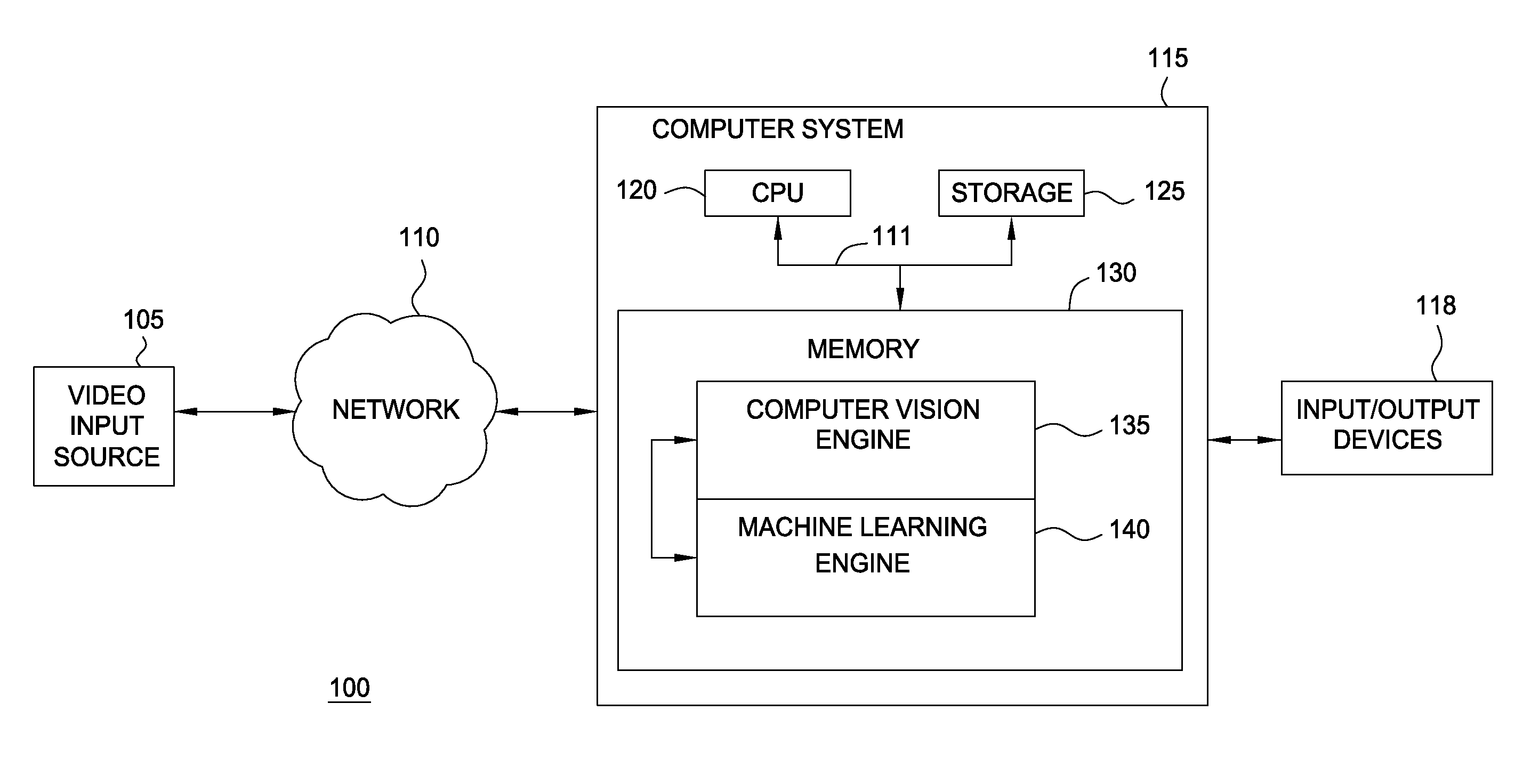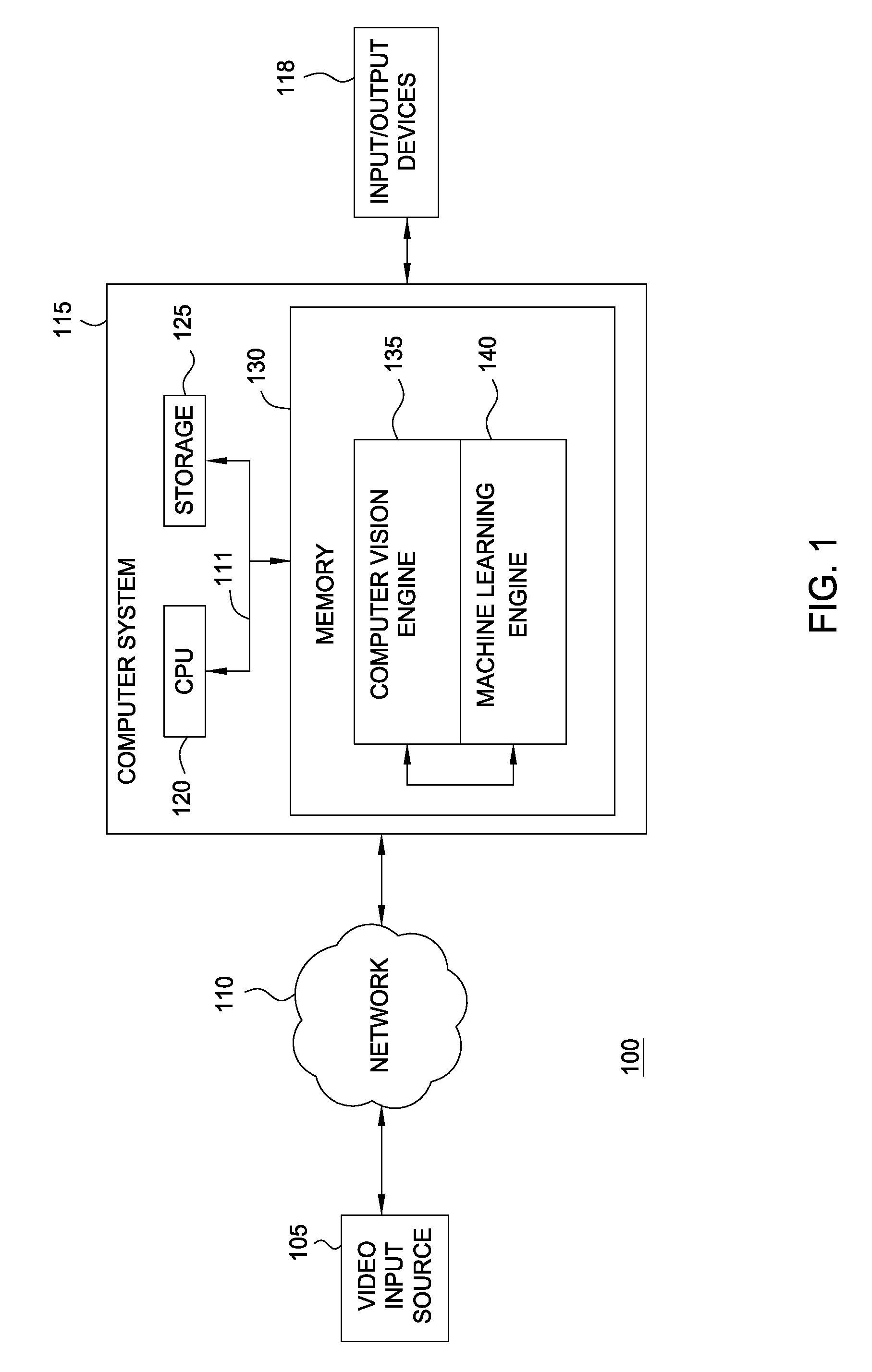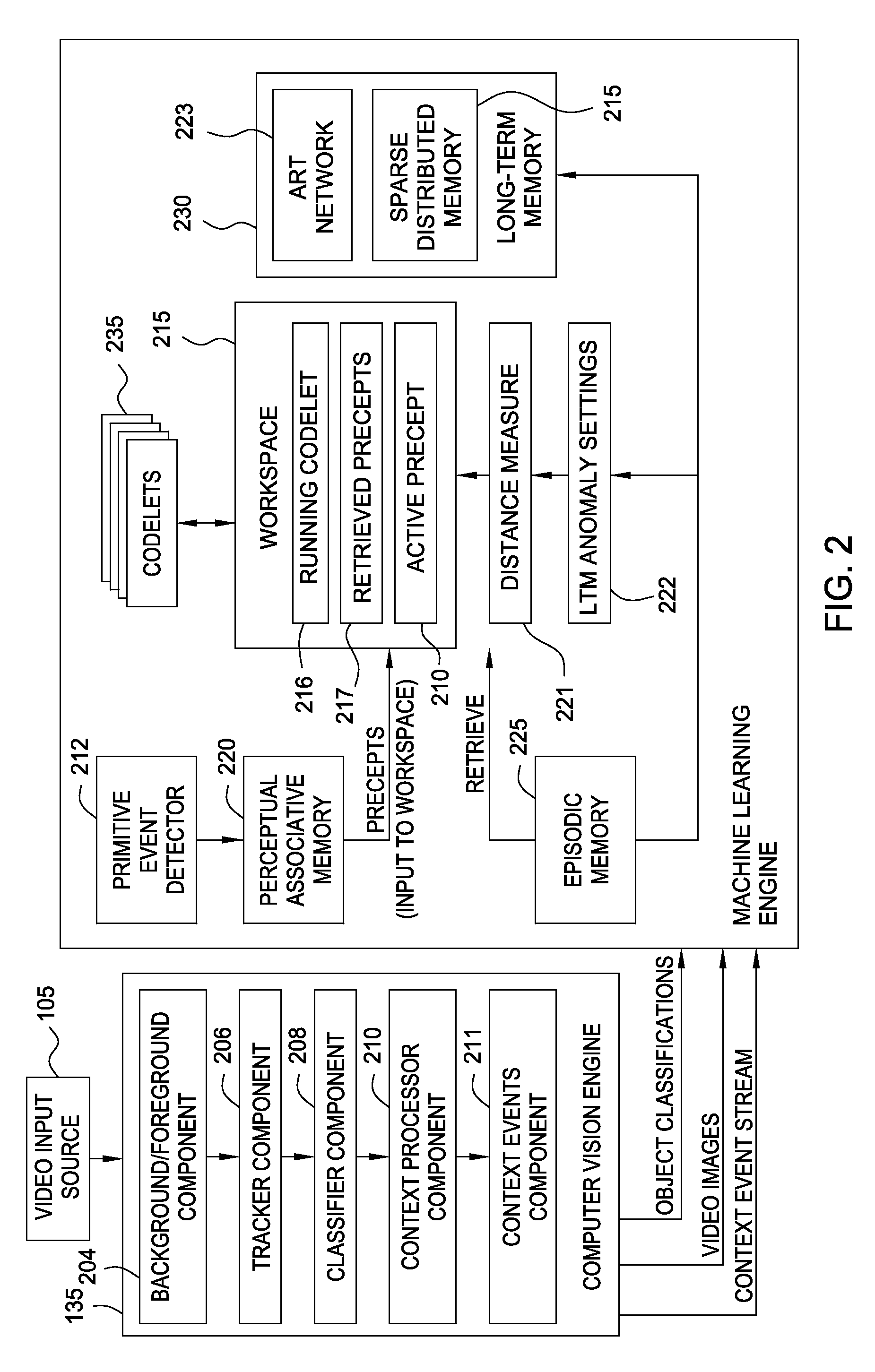Detecting anomalous events using a long-term memory in a video analysis system
a video analysis system and long-term memory technology, applied in the field of video analysis systems, can solve the problems of system being generally incapable of recognizing behavior, surveillance systems with recognition capabilities that are labor intensive and prohibitively expensive to maintain or adapt for different specialized applications, and currently available video surveillance systems are typically incapable of recognizing new patterns of behavior
- Summary
- Abstract
- Description
- Claims
- Application Information
AI Technical Summary
Problems solved by technology
Method used
Image
Examples
Embodiment Construction
[0021]Embodiments of the invention provide a long-term memory used to store and retrieve information learned while a video analysis system observes a stream of video frames depicting a given scene. Further, the long-term memory may be configured to detect the occurrence of anomalous events, relative to observations of other events that have occurred in the scene over time. The long-term memory may publish the occurrence of an anomalous event for review by users of the system.
[0022]Generally, the video analysis system may include a computer vision engine and a machine learning engine. The computer vision engine may be configured to receive and process video frames captured by a video input source (e.g., a video camera). Output from the computer vision engine may include image data from frames of video along with a semantic labeling of such data. That is, the output of the computer vision engine may provide a symbol stream representing a basic linguistic grammar representing what is “...
PUM
 Login to View More
Login to View More Abstract
Description
Claims
Application Information
 Login to View More
Login to View More - R&D
- Intellectual Property
- Life Sciences
- Materials
- Tech Scout
- Unparalleled Data Quality
- Higher Quality Content
- 60% Fewer Hallucinations
Browse by: Latest US Patents, China's latest patents, Technical Efficacy Thesaurus, Application Domain, Technology Topic, Popular Technical Reports.
© 2025 PatSnap. All rights reserved.Legal|Privacy policy|Modern Slavery Act Transparency Statement|Sitemap|About US| Contact US: help@patsnap.com



